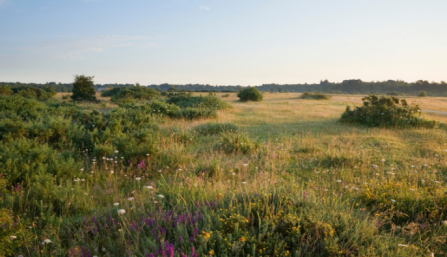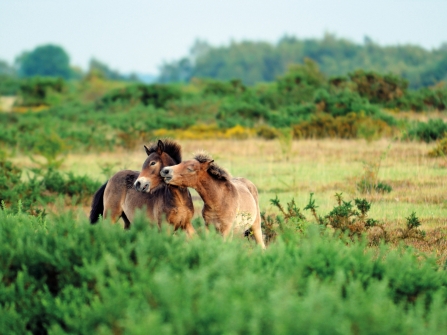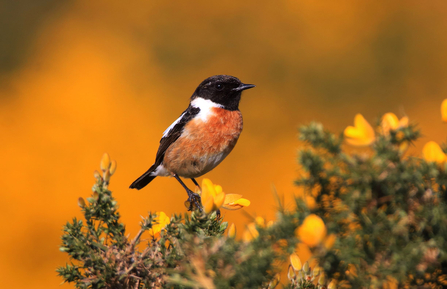
Greenham Common by James Osmond
Amy Lewis

Greenham Common by James Osmond
This year marks the 25th anniversary of the reopening of Greenham and Crookham Commons to the public following decades of military occupation. In celebration of this significant milestone, next Tuesday the Berkshire, Buckinghamshire & Oxfordshire Wildlife Trust (BBOWT) invites the local community to join in a special event that will honour the rich history and vibrant biodiversity of the Commons, while also looking ahead to a future of continued conservation efforts.
The anniversary celebration will take place from 10am-4pm on Tuesday 8 April at Greenham and Crookham Commons, managed by BBOWT on behalf of West Berkshire Council, which have become vital havens for wildlife and important green spaces for local residents over the past quarter-century. The event will offer a variety of family-friendly activities, guided walks, and opportunities to learn about the unique natural environment that the Commons support.
Greenham Common 25th Anniversary (https://youtu.be/_Q3k-O4oPFI?si=R-EHACxTj5ofD5dY)
Join us to celebrate this landmark anniversary!
Greenham and Crookham Commons carry the memories of a rich and checkered history. Situated on a plateau formed at the end of the last ice age, for centuries it was home to an abundance of wildlife, as well as being common land used by local people for grazing livestock and other activities. However, in the 20th century, the land was privatized and repurposed as an RAF airfield before later being handed over to the US Air Force.
Greenham Common hit the headlines during the Cold War when thousands of women gathered to protest the nuclear weapons being stored at the then American military air base. Peace camps were set up around the fenced air base, the last of which was finally disbanded in the late 90s.
Then, in 2000, 1.2 million tonnes of concrete and gravel were removed from the old military runway, the fences came down, the site was reopened to the public and cattle and ponies returned to graze freely.

Ponies on Greenham Common by Rob Appleby
Today, Greenham Common forms the largest area of lowland heath in West Berkshire. This fragile and threatened habitat is full of special wildlife. Walking around you may be lucky enough to hear nightingales and skylarks, spot over thirty species of butterfly, and see the rare spectacle of hundreds of autumn lady's-tresses orchids in late-summer, flowering into a snowy white bloom.
In honour of the 25 years since its reopening, the event on Tuesday 8 April will feature several exciting activities for the whole family, including:
Attendees will also have the chance to speak with BBOWT staff and volunteers about how they can become involved in future conservation efforts at Greenham and Crookham Commons, as well as other local initiatives that support wildlife and natural spaces in the region.

BBOWT’s Events Manager, Serena Millen, said:
“We take great pleasure in being able to celebrate the beauty of Greenham and Crookham Commons today, 25 years on from its reopening to the public. The site provides a safe home to an abundance of wildlife, as well as being an invaluable outdoor space for our community. The past quarter-century has been a journey of restoration, growth, and collaboration. Together with West Berks Council, we’re excited to continue caring for this remarkable space for generations to come.
We are thrilled to have the opportunity to honour all those who have invested their time, energy and resources into safeguarding this rare heathland with next week’s open celebration. Please do come and join us – we have some fabulous family fun on offer!”
As we celebrate the past, BBOWT remains focused on the future. With the support of the local community, BBOWT will continue to manage Greenham and Crookham Commons on behalf of West Berks Council as a vital wildlife haven, carrying out important conservation work to maintain the diverse ecosystems that thrive there. The event is not only a celebration of 25 years of success but also an opportunity to highlight the ongoing importance of protecting our natural spaces and biodiversity.